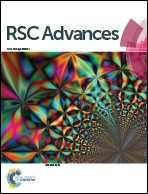Integrated traditional Chinese and western medicine modulator for overcoming the multidrug resistance with carbon nanotubes
Abstract
The purpose of this work is to challenge the multidrug resistance (MDR) in tumors by using modulator integrated specific targeting, P-glycoprotein (P-gp) inhibitor and a chemotherapeutic agent. P-gp antibody (P-gp Ab) was used to functionalize shortened carbon nanotubes (CNTs), followed by co-loading with the traditional Chinese medicine gambogic acid (GA) as a P-gp inhibitor and the chemotherapeutic agent, doxorubicin (Dox), forming a GA/Dox/P-gp/Ab-CNT drug delivery system (DDS) as a modulator. In vitro and in vivo tests to determine the reversal effect on MDR in human leukemic cells (K562/A02) were evaluated using flow cytometry, Cell Counting Kit-8 assays, reverse transcriptase polymerase chain reaction, and western blot analysis. The function and expression of P-gp of MDR cancer cells could be successfully inhibited using GA as a reversal agent of the modulator, leading to a dramatic increase in the intracellular concentration of Dox. The accumulation of anticancer drug in the MDR cancer cells enhanced the cytotoxicity and induced more apoptosis while avoiding the toxic side effects. It was therefore concluded that the cancer therapy performance of GA/Dox/P-gp Ab-CNTs could be a promising candidate for a modulator, for overcoming tumor MDR.


 Please wait while we load your content...
Please wait while we load your content...